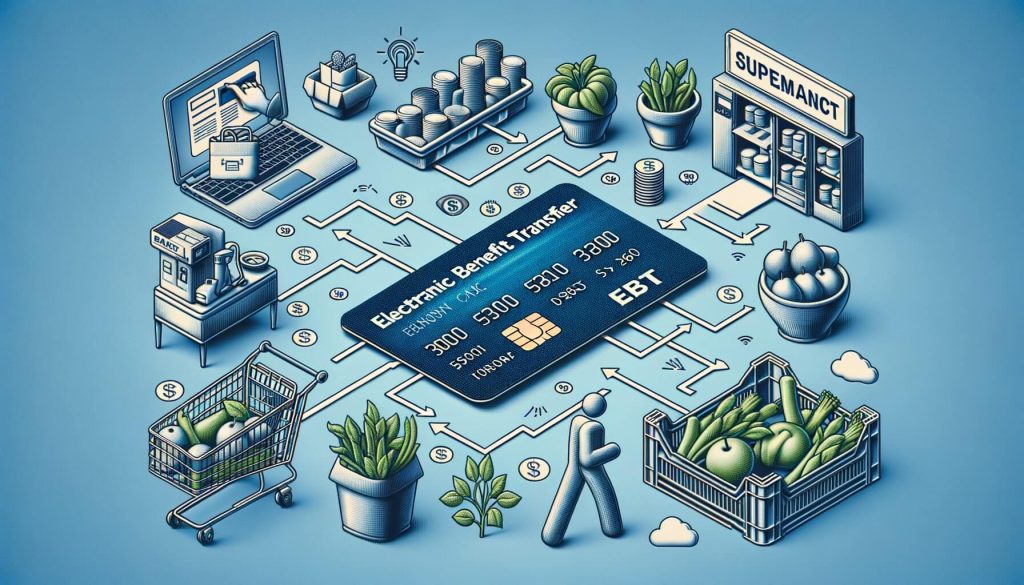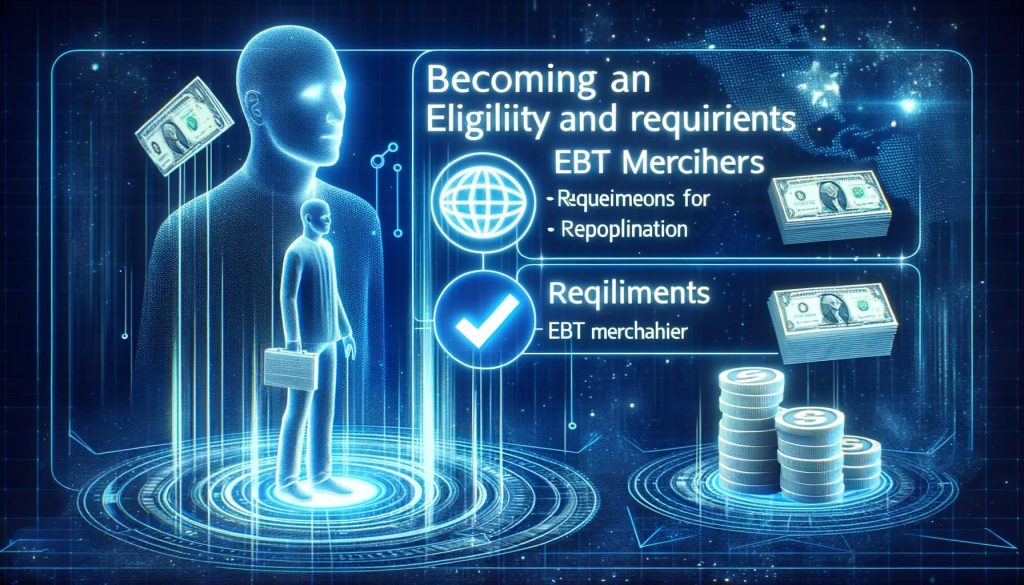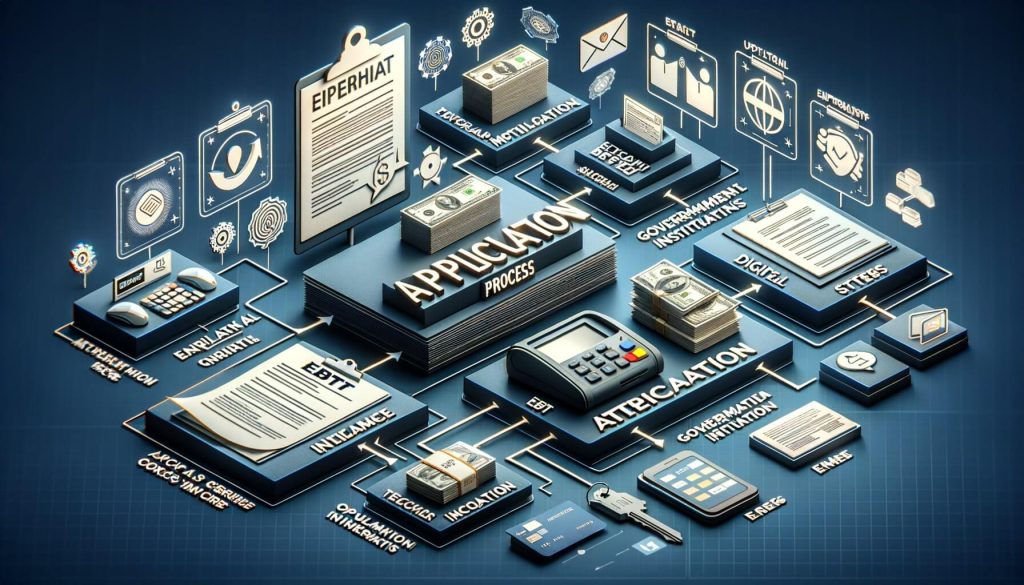
By Ethan Brooks February 9, 2025
In today’s digital age, electronic payment methods have become increasingly popular. One such method is Electronic Benefit Transfer (EBT), which allows recipients of government assistance programs to access their benefits through a card-based system. As an EBT merchant, you can tap into this growing market and provide a convenient payment option for these individuals.
In this comprehensive guide, we will explore the various aspects of becoming an EBT merchant, including understanding EBT, the benefits of offering EBT services, eligibility requirements, the application process, setting up payment processing systems, transaction processes, managing transactions and reporting, common challenges, and solutions for EBT merchants, and finally, maximizing success as an EBT merchant.
Understanding Electronic Benefit Transfer (EBT)

Electronic Benefit Transfer (EBT) is an electronic system that allows recipients of government assistance programs, such as the Supplemental Nutrition Assistance Program (SNAP) and Temporary Assistance for Needy Families (TANF), to access their benefits through a plastic card similar to a debit or credit card.
EBT cards are issued to eligible individuals and can be used at authorized retailers to purchase eligible items. The funds are automatically deducted from the recipient’s account, providing a seamless and convenient way to access benefits.
Benefits of Becoming an EBT Merchant

Becoming an EBT merchant offers several benefits for both the merchant and the customers. Firstly, it allows you to tap into a large customer base that relies on government assistance programs. According to the United States Department of Agriculture (USDA), over 42 million individuals participated in SNAP in 2020. By accepting EBT payments, you can attract these customers and increase your sales potential.
Secondly, offering EBT services can enhance your reputation as a socially responsible business. By providing a payment option that caters to individuals in need, you demonstrate your commitment to serving the community and supporting those who require assistance.
Moreover, accepting EBT payments can also lead to increased customer loyalty. Many individuals who rely on government assistance programs are regular shoppers, and by accommodating their payment preferences, you can build long-term relationships with these customers.
Eligibility and Requirements for EBT Merchant Status

To become an EBT merchant, you must meet certain eligibility requirements. Firstly, you need to operate a business that sells eligible items, such as groceries, household essentials, and other approved products. The USDA provides a comprehensive list of eligible items, and it is essential to ensure that your business aligns with these guidelines.
Additionally, you must have a valid business license and comply with all local, state, and federal regulations. This includes maintaining proper food safety standards, if applicable, and adhering to any specific requirements for your industry.
Furthermore, you must have a point-of-sale (POS) system that is capable of processing EBT transactions. This system should be secure, reliable, and compliant with all EBT regulations. It is crucial to choose a reputable payment processor that specializes in EBT services to ensure smooth and efficient transactions.
How to Apply for EBT Merchant Services

To apply for EBT merchant services, you need to follow a specific process. Firstly, you should contact your state’s EBT agency or the USDA to obtain the necessary application forms. These forms will require you to provide detailed information about your business, including your business name, address, contact information, and the type of products you sell.
You will also need to submit supporting documents, such as your business license, tax identification number, and any other relevant certifications. It is essential to ensure that all the information provided is accurate and up to date to avoid any delays in the application process.
Once you have completed the application forms and gathered all the required documents, you can submit them to the appropriate agency for review. The agency will evaluate your application and determine whether you meet the eligibility criteria for EBT merchant status. This process may take several weeks, so it is important to be patient and follow up with the agency if necessary.
Setting up EBT Payment Processing Systems
Once you have been approved as an EBT merchant, you need to set up the necessary payment processing systems to accept EBT transactions. This involves integrating your POS system with the EBT network to ensure seamless and secure transactions.
Firstly, you need to choose a payment processor that specializes in EBT services. They will provide you with the necessary hardware and software to process EBT transactions. It is important to select a reputable and reliable payment processor to ensure the smooth operation of your EBT payment processing systems.
Next, you will need to install the EBT software provided by your payment processor onto your POS system. This software will enable your system to communicate with the EBT network and process EBT transactions. It is crucial to follow the installation instructions carefully to ensure proper integration and functionality.
Once the software is installed, you will need to test the system to ensure that it is working correctly. This involves conducting test transactions using EBT cards to verify that the funds are deducted accurately and that the transaction process is seamless for both the customer and the merchant.
EBT Transaction Process and Security Measures
The EBT transaction process involves several steps to ensure the security and accuracy of the transaction. When a customer presents their EBT card for payment, the merchant swipes or inserts the card into the POS system. The system then prompts the customer to enter their Personal Identification Number (PIN) to authorize the transaction.
Once the PIN is entered, the system verifies the customer’s account balance and deducts the appropriate amount from their EBT account. The transaction is then processed, and a receipt is generated for the customer’s records.
To ensure the security of EBT transactions, it is important to follow certain security measures. Firstly, merchants should never ask customers for their PIN or store it in any form. The PIN is confidential and should only be entered by the customer during the transaction process.
Additionally, merchants should regularly update their POS systems and payment processing software to ensure that they have the latest security patches and features. This helps protect against potential vulnerabilities and ensures the integrity of the transaction process.
Managing EBT Transactions and Reporting
As an EBT merchant, it is important to effectively manage EBT transactions and maintain accurate records. This involves keeping track of all EBT transactions, including the date, time, amount, and customer information. This information can be used for reconciliation purposes and to address any discrepancies that may arise.
Many payment processors offer reporting tools that allow merchants to generate detailed reports of their EBT transactions. These reports can be used to analyze sales trends, monitor transaction volumes, and identify any issues or irregularities.
It is also important to reconcile EBT transactions with your financial records on a regular basis. This involves comparing the total EBT sales recorded in your POS system with the deposits made into your bank account. Any discrepancies should be investigated and resolved promptly to ensure accurate accounting and financial reporting.
Common Challenges and Solutions for EBT Merchants
While becoming an EBT merchant offers numerous benefits, there are also some common challenges that merchants may face. One challenge is the initial setup and integration of EBT payment processing systems. This process can be complex and time-consuming, requiring careful attention to detail and technical expertise. However, by working closely with your payment processor and following their guidance, you can overcome this challenge and ensure a smooth setup process.
Another challenge is the potential for transaction errors or declined transactions. This can occur due to various reasons, such as insufficient funds in the customer’s EBT account or technical issues with the POS system. To address this challenge, it is important to train your staff on the proper use of the POS system and educate them on common error messages and how to resolve them. Additionally, maintaining open lines of communication with your payment processor can help address any technical issues promptly.
FAQs
Q1. Can any business become an EBT merchant?
Yes, any business that sells eligible products and meets the eligibility requirements can become an EBT merchant.
Q2. How long does it take to become an EBT merchant?
The time it takes to become an EBT merchant can vary depending on factors such as the complexity of your application and the processing times of the EBT agency. It is advisable to contact your state’s EBT agency for an estimated timeline.
Q3. Can I accept both EBT and other forms of payment?
Yes, as an EBT merchant, you can accept both EBT payments and other forms of payment, such as cash, credit cards, and debit cards.
Q4. Are there any fees associated with becoming an EBT merchant?
There may be fees associated with becoming an EBT merchant, such as equipment rental fees or transaction fees. These fees vary depending on the EBT agency and the payment processing provider you choose.
Conclusion
Becoming an EBT merchant can be a lucrative opportunity for businesses, allowing them to tap into a large customer base and enhance their reputation as socially responsible entities. By understanding the intricacies of EBT, meeting the eligibility requirements, and following the application process, you can become an authorized EBT merchant.
Setting up EBT payment processing systems and ensuring the security of transactions are crucial steps in becoming an EBT merchant. By selecting a reputable payment processor, integrating the necessary software, and following security measures, you can provide a seamless and secure payment experience for your customers.
Managing EBT transactions and reporting accurately is essential for maintaining financial records and addressing any discrepancies. By utilizing reporting tools provided by your payment processor and reconciling transactions regularly, you can stay on top of your EBT sales and ensure accurate accounting.
While there may be challenges along the way, such as the initial setup process and potential transaction errors, these can be overcome with proper guidance, training, and communication. By addressing these challenges proactively, you can maximize your success as an EBT merchant and provide a valuable service to individuals who rely on government assistance programs.